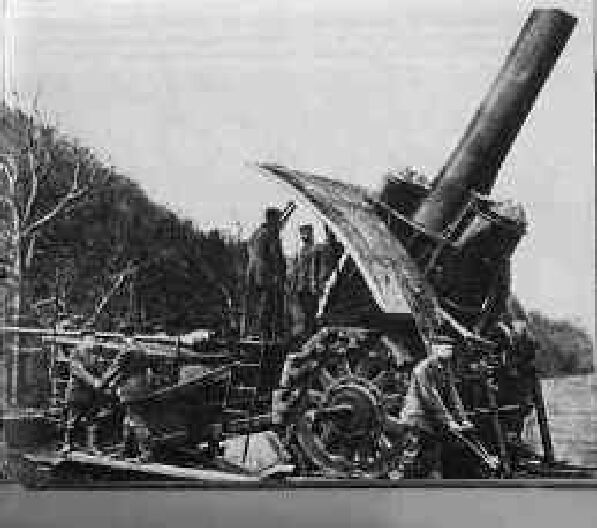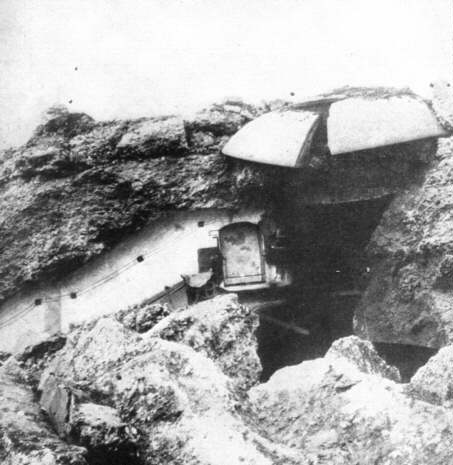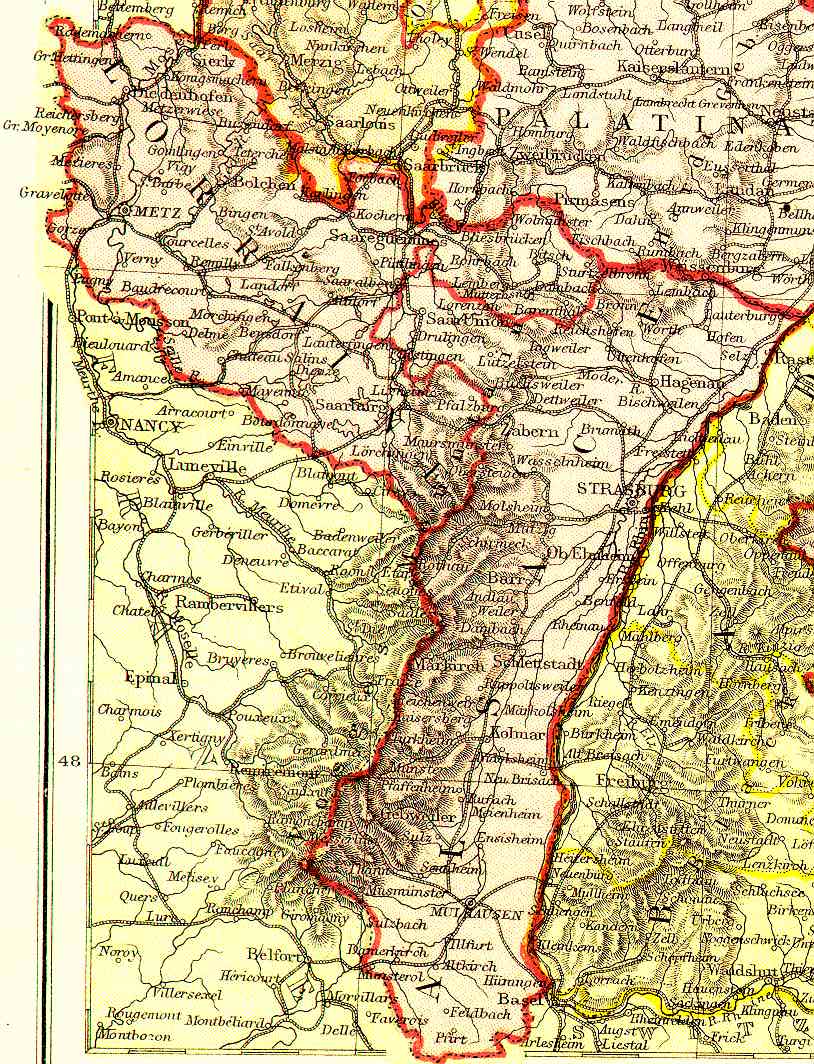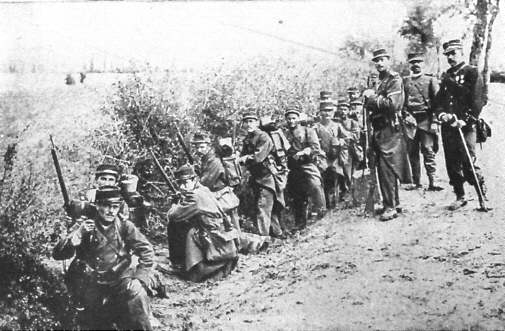 | ||
| Battle of Liege and Alsace |
| World War One - The War To End All Wars |
The Battle of Liege
August 9th, 1914:
After five bloody and frustrating days of infantry assaults against the forts at Liege, the German high command had had enough. If the Belgian defenders would not capitulate, the German Army would crush them. They sent to Essen, Germany for two massive pieces of artillery and began to set up siege. The artillery was immediately loaded on rail cars and shipped out. On 12 August 1914, the guns arrived. Just outside the city of Liege, the Germans had begun putting the monster together.

Krupp Armoires built this massive gun, a 420mm siege howitzer that fired a shell weighing over 1700 lbs. She was nicknamed "Big Bertha" and her first victim was Fort Pontisse, one of the links in the chain of 12 forts around the city of Liege. These forts had been built by the brilliant architect Henri Brialmont and were thought to be impregnable, but the Germans thought otherwise. At 6:30 p.m., the silence was broken. The massive shell whistled as it cut through the air. It hit short of its target and sent smoke and debris flying high into the air. People over 3 miles away heard the thunderous explosion. The Germans were sighting in on the fort,and they were about to hit the mark. This was the one - they knew they had the range. The men operating the gun braced themselves and fired. The shell hit, crashing into the superstructure leaving a gaping wound of twisted metal and concrete destroying the underneath chambers lying deep in the earth. No more men would die in infantry attacks. Now would come the slow and methodical destruction of the forts.

The Forts at Liege had been destroyed by the modern firepower of the German 42cm siege mortars. Design flaws in the fort had caused their failure, not the courage of the Belgian defenders. Under the most horrifying conditions anyone can imagine these brave soldiers fought on until they had exhausted all hope. No modern human can understand the hygienic conditions inside the forts. Poor ventilation caused putrid odors to form in these close quarters. Waste facilities were even worse. Due to the poor ventilation, when shells destroyed the plumbing it caused sewer gas to build up inside the forts. Life for the defenders became impossible.
15 August 1914: The same fate that had met Pontisse had met the other forts. Now the only forts left were Hologne and Flemalle, a German delegation approached the forts to meet with its commander. They informed him that if he did not surrender, like all the other forts his too would be destroyed. The Germans offered to take him to see the destruction of the other forts to help him decide. The Belgian Commandant shook his head. A valiant soldier would not surrender without a fight, so the Belgians had made the decision to defend at all cost. The German delegation pleaded with him to go and see the destruction wrought on the other forts but it was no use. These forts were sitting ducks and to the Germans this was a futile cause, thay wanted to offer the Belgians another way out, a way other than death. This was an age of bravery over brains and returning home a vanquished looser was worse than death.
The German delegation returned to their lines with the sad news, The brave intentions of the Belgian commandant had sealed the fate of the forts. The shelling started and went on at different points through out the day. The Belgians tried in vain to return fire with their smaller guns but it was of no use. At 7:30 on 16 August it had ended. The white flag was hoisted over the fort; the guns fell silent. The German engineers went in to survey the damage, what the saw was total destruction.
The Belgians had put their hopes in stopping Germany into a ring of defensive forts, but the Industrial Revolution had passed the forts by. The might of artillery had crushed the old static defenses of the Belgians.
 Alsace and the Battle of Mulhouse Recapture of Alsace had been the dream of every Frenchmen since 1871. It had been taken by Germany as a consequence of losing the Franco-Prussian War. This was a source of national pride for the French, and a thorn in their side.
With Plan XVII as their mantra, at 5:00 a.m. on 7 August 1914, the French Army entered Alsace. French generals believed that by retaking Alsace they would be able to give the French people a much-needed shot in the arm, and also, French troops there would be well placed to guard the flank of subsequent invasions further north. As the German Army started its invasion of Belgium, Joffre struck in the northeast. Under the command of General Bonneau, VII Corps crossed over the Vosge Mountains. For the first time in 43 years, French soldiers trod the soil of their beloved Alsace. Bonneau had been assigned a detachment of the First Army, plus one cavalry and two infantry divisions. This was not a large enough force for such an invasion.
On the German side were General von Heeringen and the VII Army. Heeringen took command of the VII Army on 2 August 1914, and began the defense of Alsace. The 43-year occupancy of Alsace had not been wasted. The Germans had put up many defensive positions in the area. Heeringen intended to let the French attack deep into Alsace before countering. This way he could cut them off from their forces in the west. He would also have numerical superiority over the French for this campaign.
As the French crossed the frontier into Alsace, they met little resistance. Soon they came upon the border town of Altkrich. General Bonneau had decided to take the town by classic bayonet charge. The order was given to fix bayonets; the men awaited the signal to attack. The cry soon rang out - "CHARGE!" - and the French soldiers stormed the town. German resistance was light, and Altkrich fell easily to the French. They suffered few casualties. Bonneau was cautious about any further advances. He feared General von Heeringen might be setting a trap for his army. Yet under great pressure from Joffre to advance to the Rhine by the next day, Bonneau, under protest, continued towards Mulhouse. The French advanced on Mulhouse and with only light resistance, the town fell to Bonneau and his men. The citizens of Mulhouse cheered the French as liberators. As the French flag was raised over the town the people went wild. Through all this, Bonneau was perplexed. Where was German resistance? What trick did the Germans have up their sleeves? These questions nagged at Bonneau; he was truly worried. He would not have to wait long for answers. 9 August early a.m.: Reserves from Strasbourg arrived, bolstering the German lines. A counter-attack was mounted at nearby Cernay against the French. A fierce battle broke out, but with no reserves to call on, Bonneau was forced to withdraw. When word reached Joffre, he hurriedly sent a division of reserves, but they arrived too late to be of any help. Bonneau continued his retreat towards Belfort to avoid encirclement by superior German forces. |
|||||||||
|
|
|||||||||
|
|
|||||||||

| |||||||||




